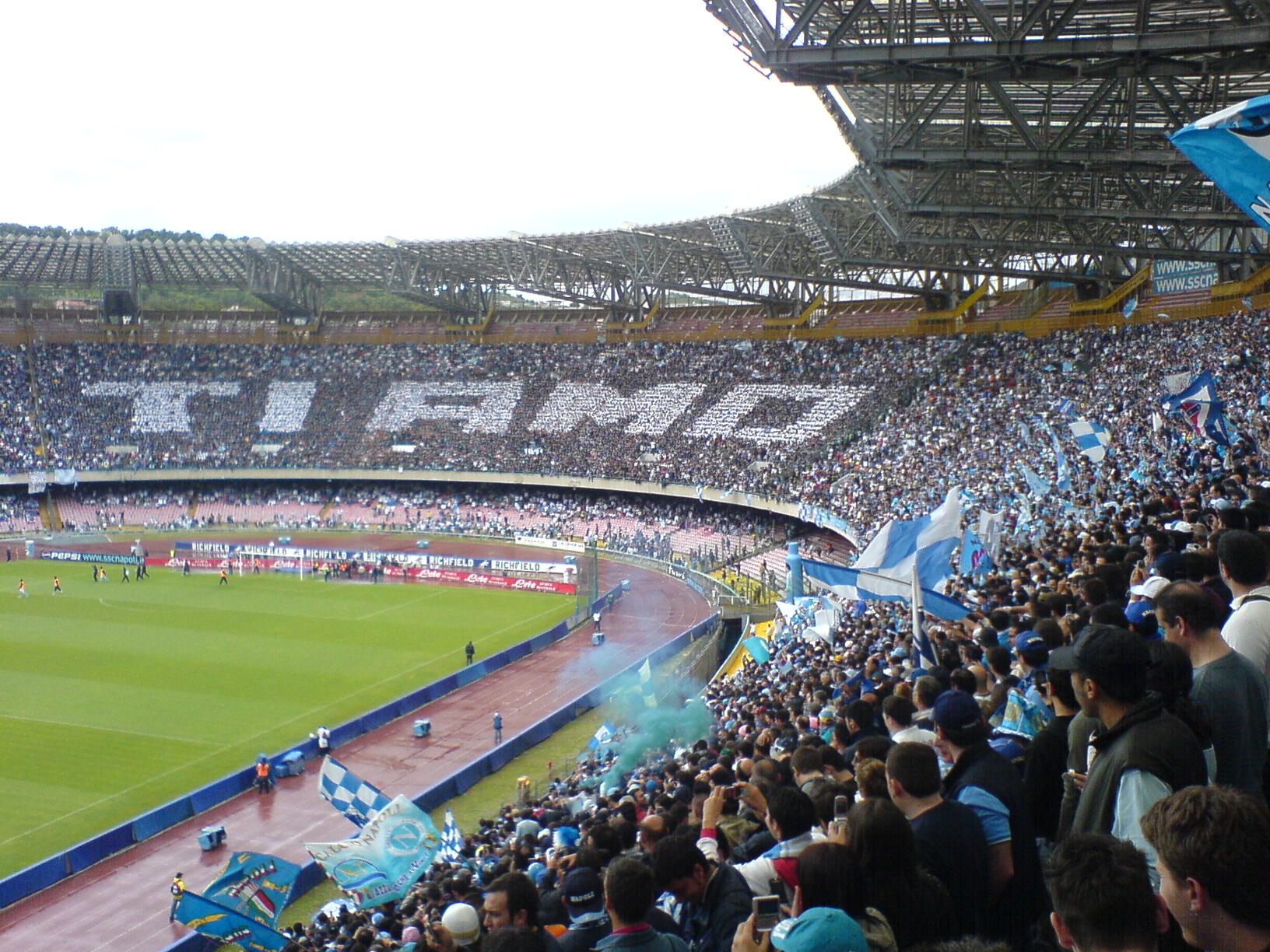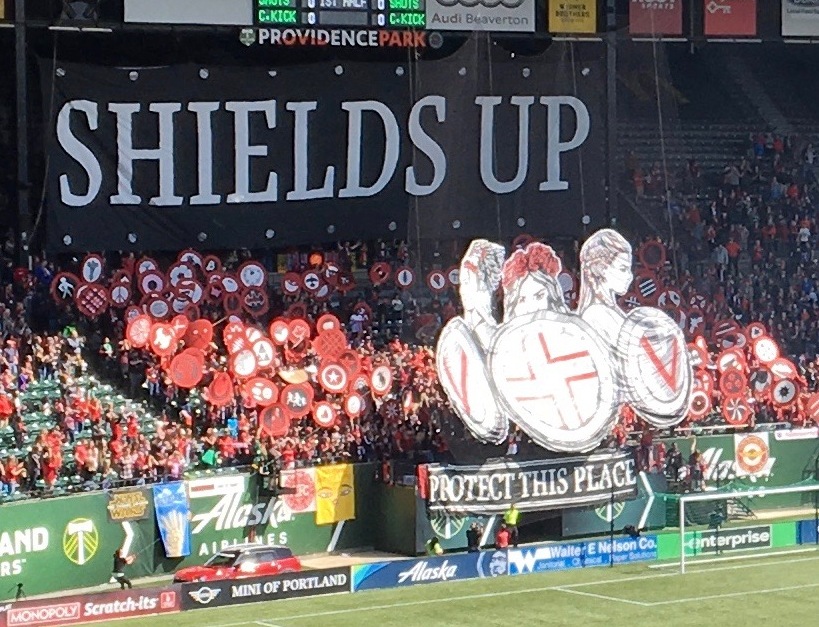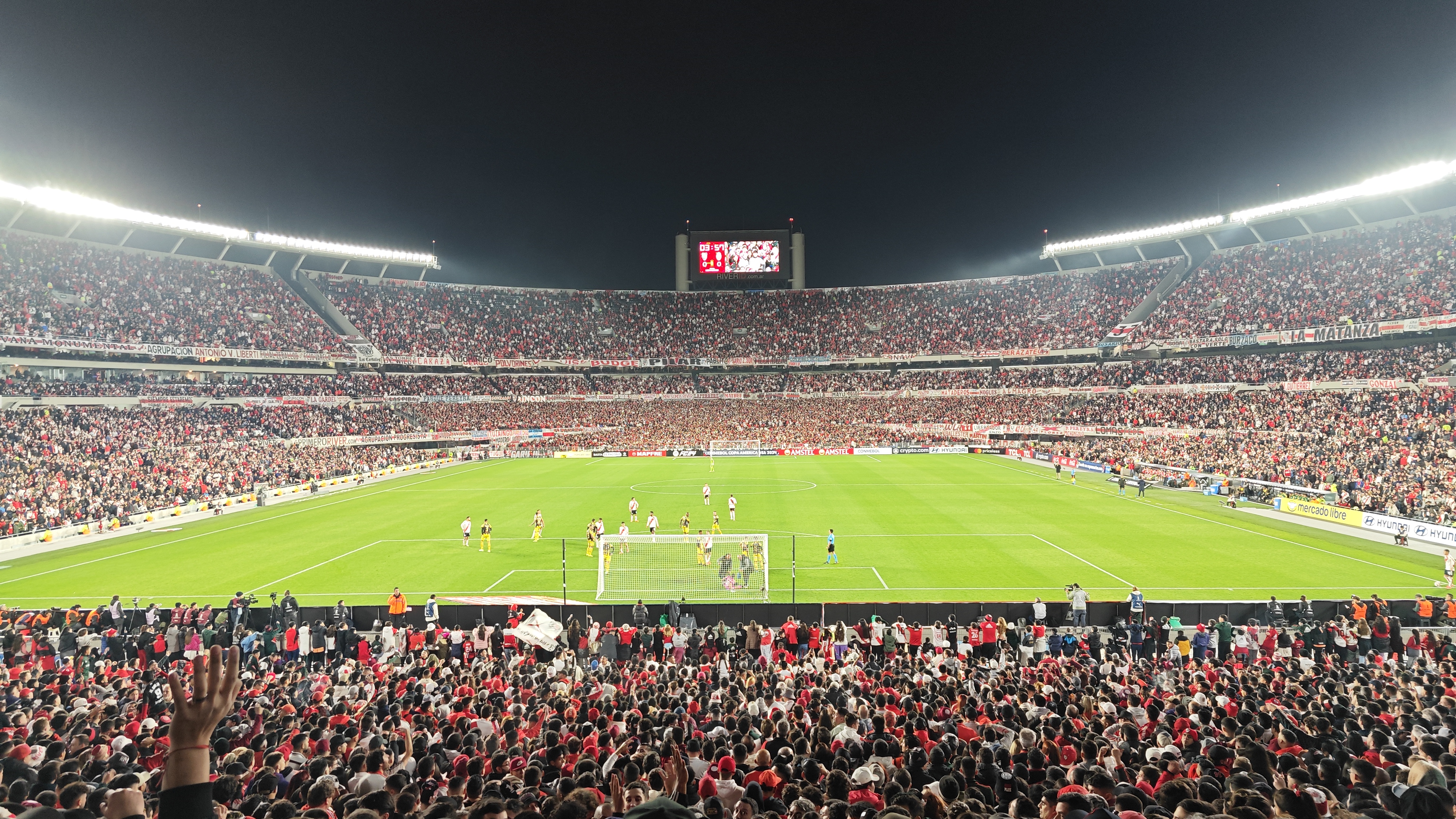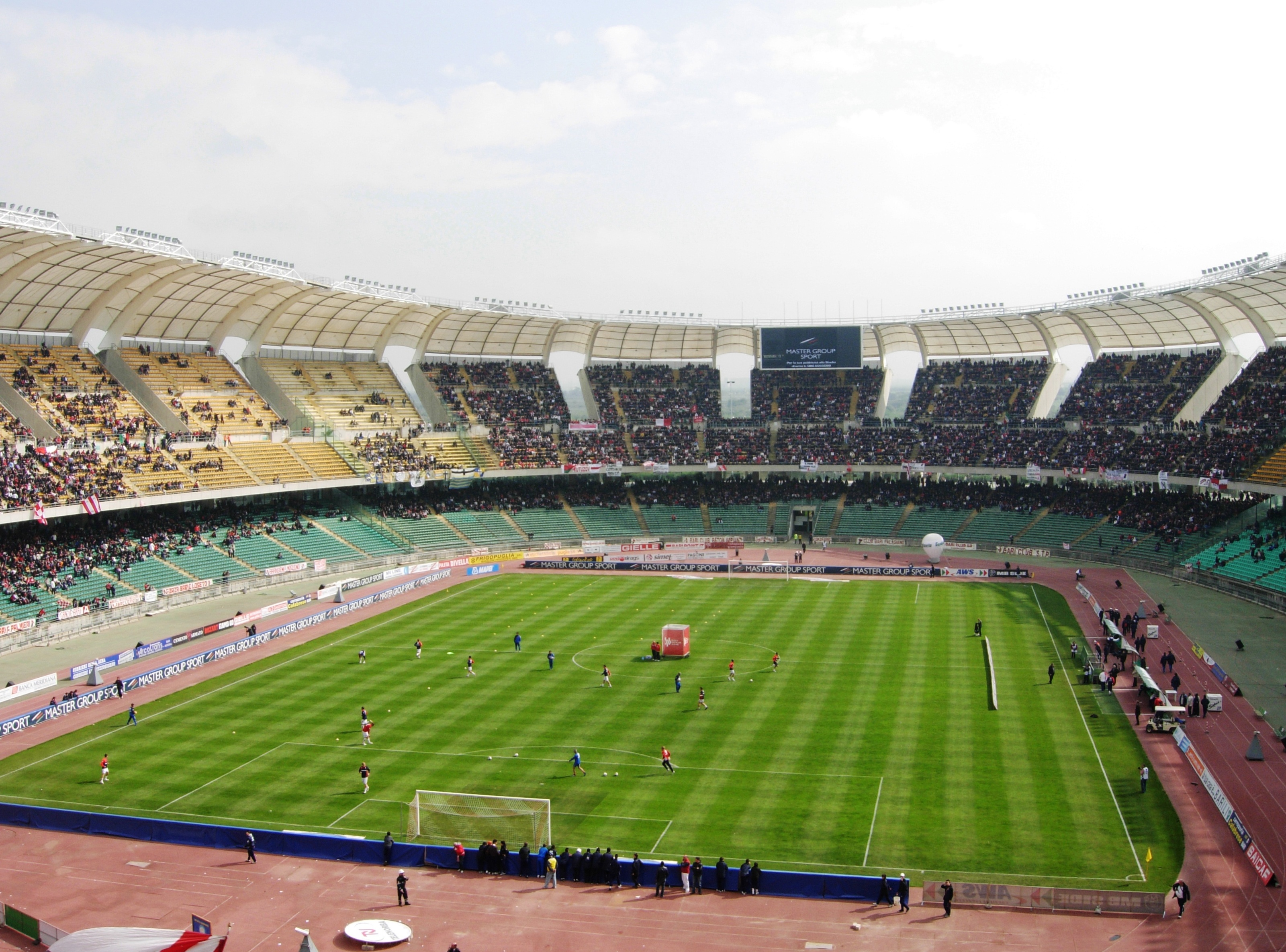|
Stadio San Paolo
Stadio Diego Armando Maradona, formerly known as Stadio San Paolo, is an all-seater football stadium in Naples, Italy. Completed in 1959, it is the fourth largest football stadium in Italy after Milan's San Siro, Rome's Stadio Olimpico and Bari's San Nicola. The stadium currently seats 54,726, but prior to converting to an all-seater venue it could hold about 90,000 people — most of them standing. It is the home of SSC Napoli, the reigning Serie A champions. Following the death of Diego Maradona in 2020, city mayor Luigi de Magistris and Napoli president Aurelio De Laurentiis proposed renaming the stadium to "Stadio Diego Armando Maradona." The proposal was passed on 4 December 2020, and was announced by the mayor on social media and made official that same day. History Napoli was in need of a replacement stadium after the Stadio Partenopeo had been destroyed during the bombing of Naples in the Second World War. The team had been playing at a smaller nearby venue ... [...More Info...] [...Related Items...] OR: [Wikipedia] [Google] [Baidu] |
SSC Napoli
Società Sportiva Calcio Napoli (), commonly known as SSC Napoli or simply Napoli, is an Italian professional football club based in Naples, Campania that currently competes in the Serie A, the highest league of Italian football. Napoli are among the most successful clubs in the nation, having won four league titles, six Coppa Italia, two Supercoppa Italiana and one UEFA Cup. Napoli are the reigning champions of Italy, after securing their second title in the last three seasons this year. The club was formed in 1926 as Associazione Calcio Napoli following the merger of US Internazionale Napoli and Naples Foot-Ball Club. Napoli saw relatively little success in its early years, winning their first major trophy in the 1962 Coppa Italia. Napoli then saw increased success in the late 1970s (including their second Coppa Italia in 1976) and especially in the 1980s, after the club acquired Diego Maradona in 1984. During his time in Naples, Maradona helped the team win its first two ... [...More Info...] [...Related Items...] OR: [Wikipedia] [Google] [Baidu] |
UEFA Elite Stadium
UEFA stadium categories are categories for association football, football stadiums laid out in UEFA's Stadium Infrastructure Regulations. Using these regulations, stadiums are rated as category one, two, three, or four (renamed from elite) in ascending ranking order. These categories replaced the previous method of ranking stadiums on one to five star scale in 2006. UEFA does not publish lists of stadiums fulfilling the criteria for any of the categories defined in the UEFA Stadium Infrastructure Regulations, but all assigned stadium categories are visible in UEFA's TIME platform, which is not open to the general public. General If a retractable roof is present, its use will be directed by consultation between the UEFA delegate and the main assigned referee. Although the minimum stadium capacity for category four is 8,000, only one stadium with a capacity less than 60,000 has been selected to host a UEFA Champions League and the UEFA Euro finals and 30,000 for the UEFA Europa ... [...More Info...] [...Related Items...] OR: [Wikipedia] [Google] [Baidu] |
Diego Maradona
Diego Armando Maradona Franco (30 October 196025 November 2020) was an Argentine professional association football, football player and manager. Widely regarded as one of the greatest players in the history of the sport, he was one of the two joint winners of the FIFA Player of the Century, FIFA Player of the 20th Century award, alongside Pelé. An advanced playmaker who operated in the Squad number (association football), classic number 10 position, Maradona's vision, passing, ball control, and Dribbling#Association football, dribbling skills were combined with his small stature, which gave him a low Center of mass, centre of gravity and allowed him to manoeuvre better than most other players. His presence and leadership on the field had a great effect on his team's general performance, while he would often be singled out by the opposition. In addition to his creative abilities, he possessed an eye for goal and was known to be a Free kick (association football), free kick spe ... [...More Info...] [...Related Items...] OR: [Wikipedia] [Google] [Baidu] |
Curva (stadia)
Curva (plural: ''curve'' ) is an Italian term or name for curved stands of seating located at sports stadiums, particularly in Italy; so named, originally, due to their curved or bending shape. The curva plays an integral part in the culture of Ultras and European football. Composition The majority of stands referred to as a "curva" are located behind the goals in their respective stadiums and contain the most vocal supporters within them, often known as Ultras. They are usually curved in shape, in some form whether minor or major, often due to the presence of a running track around the pitch. The Stadio Giuseppe Meazza provides an example of two prominent stands referred to as "curva", " Curva Nord" and " Curva Sud", which contain only minor curves at their corners, while the Stadio Olimpico provides an example of two completely curved stands. A curva may extend from one corner flag to another or be located centrally behind the goal, bordered by two separate corner sections f ... [...More Info...] [...Related Items...] OR: [Wikipedia] [Google] [Baidu] |
Tifosi
''Tifo'' () is the phenomenon whereby ''tifosi'' of a sports team make a visual display of any choreographed flag, sign or banner in the stands of a stadium, mostly as part of an association football match. ''Tifo'' are most commonly seen in important matches, local derbies, and rivalries, and although the tradition originated at club teams, some national teams also have fans that organise ''tifo'' on a regular basis. ''Tifo'' is primarily arranged by ultras or a supporter club to show their love to the club, but are sometimes sponsored or arranged by the club itself. ''Tifosi'' () is a group of supporters of a sports team, especially those that make up a ''tifo''. History The ''tifos'' culture, like the origin of its name, has its roots in Italy and Southern Europe, and has a strong presence in Eastern Europe. It has much in common with the ultras culture and appeared at the same time, in the late 1960s and early 1970s. ''Tifo'', while highly prevalent in Europe, has ... [...More Info...] [...Related Items...] OR: [Wikipedia] [Google] [Baidu] |
Argentina National Football Team
The Argentina national football team (), nicknamed ''La Albiceleste'' (), represents Argentina in men's international Association football, football and is administered by the Argentine Football Association, Asociación del Fútbol Argentino (), the governing body of football in Argentina. It has been a member of FIFA since 1912 and a founding member of CONMEBOL since 1916. It was also a member of Panamerican Championship#Panamerican Football Confederation, PFC, the unified confederation of the Americas from 1946 to 1961. They are the reigning world champions, having won the 2022 FIFA World Cup, most recent FIFA World Cup in 2022, earning their third star shown by the team's crest. Overall, Argentina has appeared in a List of FIFA World Cup finals, FIFA World Cup final six times, a record equaled by Italy national football team, Italy and surpassed only by Brazil national football team, Brazil and Germany national football team, Germany, they also appeared in the Football at t ... [...More Info...] [...Related Items...] OR: [Wikipedia] [Google] [Baidu] |
2019 Summer Universiade
The 2019 Summer Universiade (), officially known as the XXX Summer Universiade () and also known as Naples 2019, or Napoli 2019, was held in Naples, Italy, between 3 and 14 July 2019. It was initially scheduled for Brasília, Brazil in July 2019. However, on 23 December 2014, it was confirmed that Brasília had withdrawn from hosting the event, citing financial problems. International University Sports Federation decided to reopen the bidding process after the withdrawal. Host selection First process On 14 June 2012, the then-Ministry of Sports (Brazil), Brazilian Minister of Sports, Aldo Rebelo, and the president of CBDU (''Confederação Brasileira do Desporto Universitário''), Luciano Cabral, announced that after the failed bid by Brazil for the 2017 Summer Universiade, they would bid again for the 2019 Summer Universiade. Brazil's capital Brasília was appointed as the bid city again after it lost in 2017 to Taipei. Brazil previously hosted the Summer Universiade once in 19 ... [...More Info...] [...Related Items...] OR: [Wikipedia] [Google] [Baidu] |
1990 FIFA World Cup
The 1990 FIFA World Cup was the 14th FIFA World Cup, a quadrennial Association football, football tournament for men's senior national teams. It was held from 8 June to 8 July 1990 in Italy, the second country to host the event for a second time (the first being Mexico in 1986 FIFA World Cup, 1986). Teams representing 116 national football associations entered and 1990 FIFA World Cup qualification, qualification began in April 1988. 22 teams qualified from this process, along with the host nation Italy national football team, Italy and defending champions Argentina national football team, Argentina. The tournament was won by Germany national football team, West Germany, for the third time. They 1990 FIFA World Cup Final, beat defending champions Argentina 1–0 at the Stadio Olimpico in Rome, a rematch of 1986 FIFA World Cup Final, the previous final four years earlier. Italy finished third and England national football team, England fourth, after both lost their semi-finals ... [...More Info...] [...Related Items...] OR: [Wikipedia] [Google] [Baidu] |
Alcide De Gasperi
Alcide Amedeo Francesco De Gasperi (; 3 April 1881 – 19 August 1954) was an Italian politician and statesman who founded the Christian Democracy party and served as prime minister of Italy in eight successive coalition governments from 1945 to 1953. De Gasperi was the last prime minister of the Kingdom of Italy, serving under both Victor Emmanuel III and Umberto II. He was also the first prime minister of the Italian Republic, and also briefly served as provisional head of state after the Italian people voted to end the monarchy and establish a republic. His eight-year term in office remains a landmark of political longevity for a leader in modern Italian politics. De Gasperi is the fifth longest-serving prime minister since the Italian Unification. A devout Catholic, he was one of the founding fathers of the European Union along with fellow Italian Altiero Spinelli. Early years De Gasperi was born in 1881 in Pieve Tesino in Tyrol, now part of the Italian region of Trenti ... [...More Info...] [...Related Items...] OR: [Wikipedia] [Google] [Baidu] |
Cornerstone
A cornerstone (or foundation stone or setting stone) is the first stone set in the construction of a masonry Foundation (engineering), foundation. All other stones will be set in reference to this stone, thus determining the position of the entire Construction, structure. Over time a cornerstone became a ceremony, ceremonial masonry stone, or replica, set in a prominent location on the outside of a building, with an inscription on the stone indicating the construction dates of the building and the names of architect, Construction worker, builder, and other significant individuals. The rite of laying a cornerstone is an important cultural component of eastern architecture and metaphorically in sacred architecture generally. Some cornerstones include time capsules from, or engravings commemorating, the time a particular building was built. History The ceremony typically involved the placing of Sacrifice, offerings of cereal, grain, wine and oil on or under the stone. These were s ... [...More Info...] [...Related Items...] OR: [Wikipedia] [Google] [Baidu] |
Fuorigrotta
Fuorigrotta (; ) is a western suburb of Naples, southern Italy. Covering an area of 6,2 km2, it is the most populated suburb of the city (population: 76.521). Geography It lies beyond the Posillipo hill and has been joined to the main body of Naples by two traffic tunnels through that hill since the early 20th century. It is the site of the Stadio Diego Armando Maradona, home to the Serie A team S.S.C. Napoli and the PalaBarbuto, home of the Lega Basket Serie A team Napoli Basket. It is also the site of the new Monte Sant'Angelo campus of the University of Naples. Etymology and history The suburb owes its name, meaning "outside the grotto", to its position: since Roman times, one or more tunnels have connected it with the district of Mergellina. The oldest tunnel is a Roman one, the Crypta Neapolitana, connecting Fuorigrotta with Piedigrotta. In Roman times, it connected Naples to the road that led to Pozzuoli and to area of the Phlegrean Fields. Fuorigrotta ha ... [...More Info...] [...Related Items...] OR: [Wikipedia] [Google] [Baidu] |
Bombing Of Naples In World War II
During World War II the Italian city of Naples suffered approximately 200 Strategic bombing, air raids by the Allies of World War II, Allies from 1940 to 1944; Milan was the only Italian city attacked more frequently. Almost all of the attacks — a total of 181 — were launched in the first nine months of 1943 before the Four days of Naples and the Allied occupation of the city at the beginning of October. Estimates of civilian casualties vary between 20,000 and 25,000 killed.Air Raids on Naples in WWII Background Naples was a major strategic objective in the Mediterranean and Middle East theatre of World War II and the Italian campaign (World War II), Italian campaign. Its Port of Naples, port was a principal trading connection to Africa, as well as a center of industry and ...[...More Info...] [...Related Items...] OR: [Wikipedia] [Google] [Baidu] |









